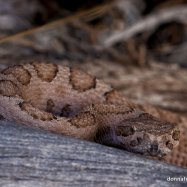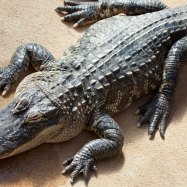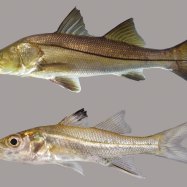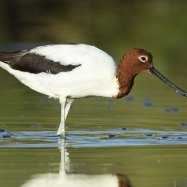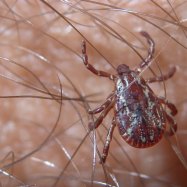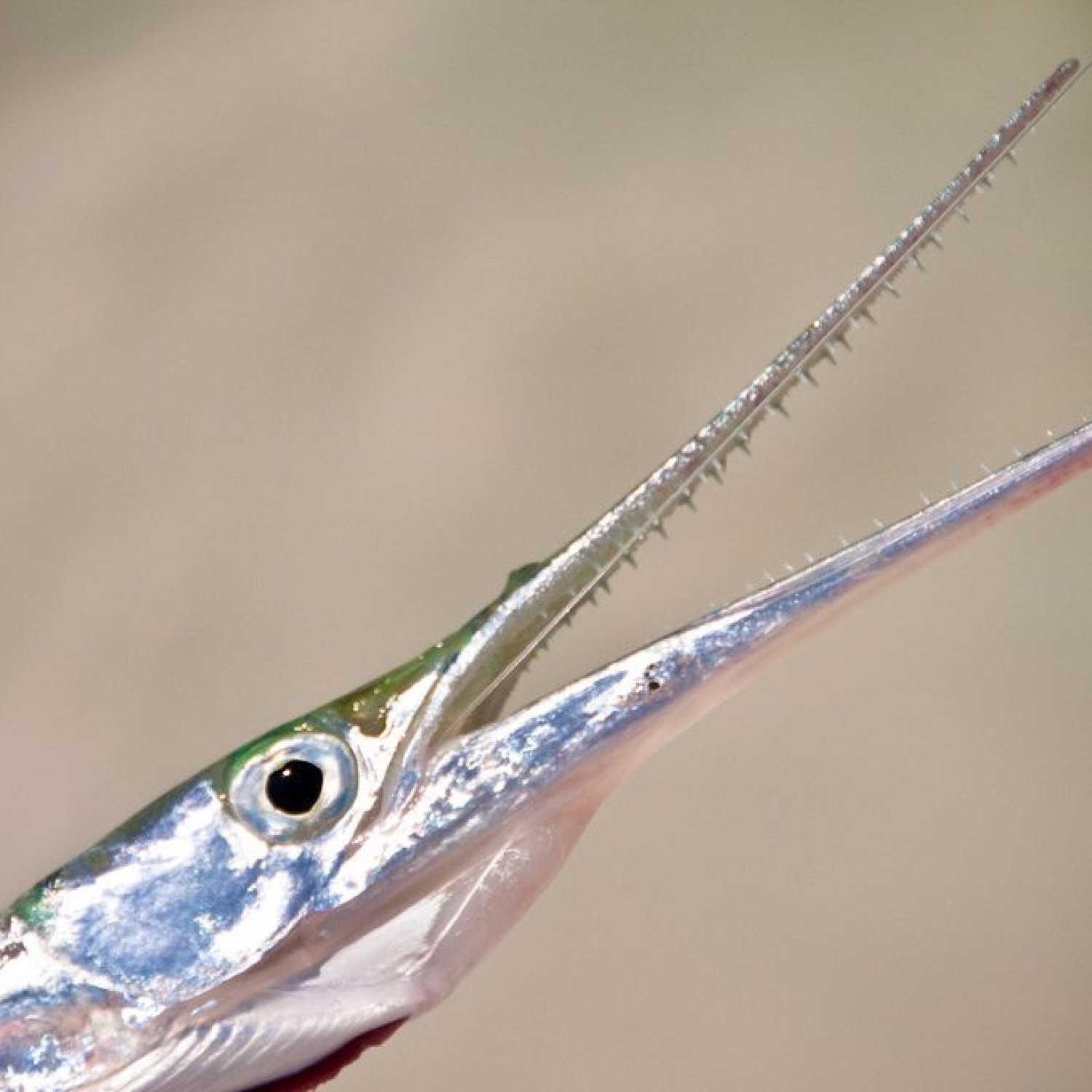
Needlefish
Ranges from 18 to 40 inches
Meet the needlefish, a long and slender fish found in coastlines, estuaries, and coral reefs. These fast swimmers can reach lengths of 18 to 40 inches and belong to the Belonidae family. Keep an eye out for these unique creatures on your next beach vacation! #Needlefish #Belonidae #Coastlines #CoralReefs
Animal Details Summary:
Common Name: Needlefish
Kingdom: Animalia
Habitat: Marine and brackish waters
Needlefish: The Silent Predator of the Sea
When you think of marine animals, you might picture colorful tropical fish, majestic whales, or fierce sharks. But there is one creature that often flies under the radar – the needlefish. Found in tropical and subtropical waters all around the world, this long and slender fish might not catch your eye at first glance, but don't be fooled by its unassuming appearance. Beneath the water's surface, they are fast, agile, and aggressive hunters, making them a fascinating and mysterious creature to explore Needlefish. In this article, we'll delve into the world of needlefish, uncovering their scientific details, habitat, behavior, and more.A Closer Look at the Needlefish's Taxonomy
Scientifically known as Belonidae, the needlefish belongs to the Animalia kingdom, making them part of the vast and diverse group of animals we share our planet with. They belong to the Chordata phylum, meaning they have a backbone and are classified as vertebrates. Their class is Actinopterygii, which refers to their bony fish classification. Within the Actinopterygii class, the needlefish falls under the order Beloniformes and the family Belonidae, giving them their scientific name Belonidae.A Worldwide Distribution
Don't be fooled by their small size – needlefish can be found in almost every tropical and subtropical ocean around the world. They are prevalent in countries such as the United States, Indonesia, Tahiti, and the Mediterranean Sea, just to name a few. They are usually found in warm waters, but they can also adapt to colder climates, making them a versatile and adaptable species.Exploring the Habitat of Needlefish
One of the most interesting aspects of the needlefish is their habitat Northern Cardinal. While they are mostly found in ocean waters, they can also survive in brackish waters, which is where saltwater and freshwater mix. This makes them a unique and diverse species that can thrive in various environments. They can be found in a range of areas such as coastlines, estuaries, and even coral reefs. As long as the water is warm and shallow, there's a good chance you'll spot a needlefish.Predatory Feeding Method
Needlefish are known as predatory fish, meaning they hunt down their prey for food. They have a long and pointed mouth, resembling a needle, which is where they get their name from. This sharp beak-like structure allows them to pierce their prey, making them efficient hunters. They feed on a variety of smaller marine animals such as crustaceans, smaller fish, and sometimes even small birds. With their powerful jaws and lightning-fast speed, needlefish can quickly catch their prey, making them a vital part of the ocean's ecosystem.Unique Body Shape and Coloration
One of the most distinctive features of a needlefish is its body shape. Their long and slender body allows them to move swiftly through the water, making it easier for them to catch their prey. They can grow to be anywhere between 18 to 40 inches, making them a medium-sized fish. They usually weigh around 11 pounds, although some individuals can grow to be slightly heavier.Their coloration is also unique, with most needlefish having a silver or greenish-blue hue on their upper body and white or silver on their underside. This body coloration allows them to camouflage in the water, making them harder to spot for their prey. It also gives them a beautiful shimmer in the sunlight, adding to their overall visual appeal.
The Needlefish's Fascinating Behavior
Needlefish are known to be fast-swimming and aggressive creatures. With their sharp beak and sleek body, they can quickly reach high speeds in the water, making them formidable hunters. They are also known to be territorial, defending their area from other needlefish and potential threats. They are solitary creatures, except during mating season when they form temporary pairs.Another interesting behavior of needlefish is their ability to leap out of the water. They do this to escape predators or to catch prey that may be out of the water. These jumps can often be quite impressive, as they can reach heights of up to six feet. However, this behavior also poses a danger to humans, especially those participating in water activities, as they could accidentally get hit by a flying needlefish.
The Importance of Studying Needlefish
While they may not be as well-known as other marine animals, studying needlefish is essential for several reasons. As mentioned earlier, they play a crucial role in the ocean's ecosystem as predators, keeping the population of smaller marine animals in check. Additionally, by studying their behavior and habitat, researchers can gain a better understanding of the health of our oceans and how to protect these creatures.Another reason for studying needlefish comes from their potential medicinal properties. Studies have shown that their venom contains substances with potential anti-inflammatory and anti-tumor properties, making them a subject of interest for medical research. However, further studies are needed to fully explore this potential.
Conclusion: Like a Needle in the Haystack
In conclusion, the needlefish may not be the most well-known or glamorous marine animal, but they are a fascinating and crucial species that deserve our attention. From their unique body shape and coloration to their swift and aggressive behavior, the needlefish has many remarkable qualities that make it a true predator of the sea. As we continue to learn more about these creatures, we can hope to gain a deeper understanding of the ocean and its inhabitants, leading us towards a better and more sustainable future for all.

Needlefish
Animal Details Needlefish - Scientific Name: Belonidae
- Category: Animals N
- Scientific Name: Belonidae
- Common Name: Needlefish
- Kingdom: Animalia
- Phylum: Chordata
- Class: Actinopterygii
- Order: Beloniformes
- Family: Belonidae
- Habitat: Marine and brackish waters
- Feeding Method: Predatory
- Geographical Distribution: Tropical and subtropical waters worldwide
- Country of Origin: Various countries
- Location: Coastlines, estuaries, and coral reefs
- Animal Coloration: Silver or greenish-blue on the upper body, white or silver on the underside
- Body Shape: Long and slender
- Length: Ranges from 18 to 40 inches
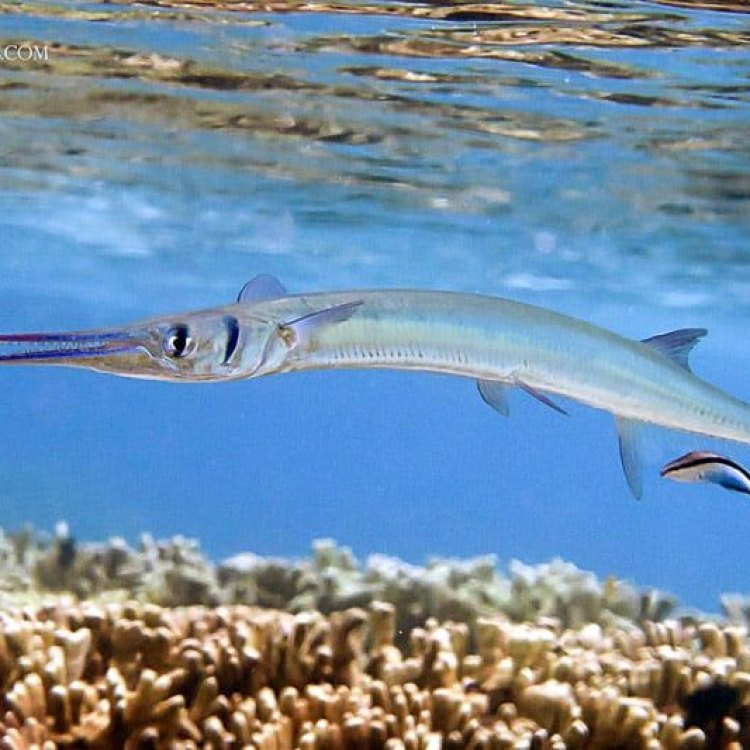
Needlefish
- Adult Size: Can grow up to 3 feet in length
- Average Lifespan: Around 6 years
- Reproduction: Sexual reproduction
- Reproductive Behavior: Spawning
- Sound or Call: No specific sound or call
- Migration Pattern: Some species exhibit migratory behaviors
- Social Groups: Usually solitary, but may form small groups
- Behavior: Fast and agile swimmers, often seen near the water surface
- Threats: Habitat loss, overfishing, pollution
- Conservation Status: Varies by species, some are listed as Least Concern
- Impact on Ecosystem: Important predators in their ecosystems
- Human Use: Commercial and recreational fishing
- Distinctive Features: Long beak-like jaws, sharp teeth, and slender body
- Interesting Facts: Some species are known for their ability to leap out of the water
- Predator: Birds, larger fish
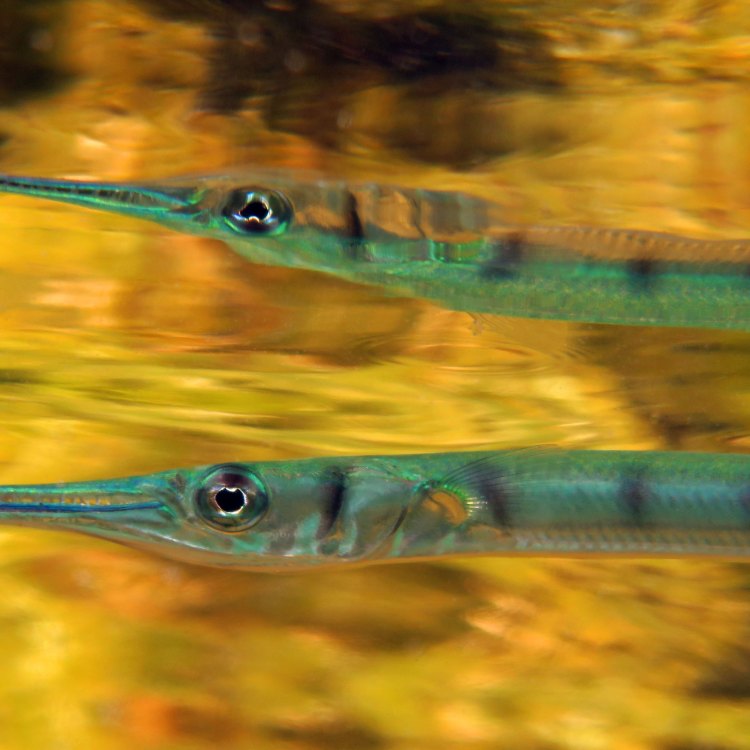
Belonidae
The Magnificent and Misunderstood: The Fascinating World of Needlefish
When we think of the ocean, we often imagine majestic creatures like dolphins, sharks, and whales. But there is a smaller and lesser-known fish that deserves our attention and admiration - the needlefish. With their long, beak-like jaws and slender bodies, needlefish may not be the most visually striking fish, but their unique features and behaviors make them a fascinating and important part of our marine ecosystems.So, let's dive deeper into the world of needlefish, as we discover their impressive size, reproductive habits, threats, and more PeaceOfAnimals.Com.
A Size That Surpasses Expectations
The needlefish, also known as garfish or longtom, can grow up to 3 feet in length. Surprisingly, their slender bodies and long jaws contribute to their impressive size, rather than their overall bulk. They are found in tropical and subtropical waters around the world, with some species also inhabiting brackish and freshwater environments.Despite their elongated bodies, needlefish are fast and agile swimmers, often seen near the water surface. This unique swimming ability is due to their dorsal and anal fins being located towards the rear of their body, making them more streamlined and efficient swimmers. They are also equipped with a powerful tail fin, allowing them to propel themselves through the water with great speed and precision.
A Sexual Revelation: Reproduction and Spawning
Like most fish, needlefish reproduce through sexual reproduction. This process involves the fertilization of eggs by sperm, leading to the development of new offspring. However, needlefish take a unique approach to this process by participating in a behavior known as spawning Northern Inuit Dog.During spawning, male and female needlefish engage in a synchronized dance, gliding side by side and releasing eggs and sperm into the water. This behavior is often done in groups, and the fertilized eggs are left to develop on their own. The coordination and timing of this ritual are crucial for the survival of the species, and it is truly a remarkable sight to witness.
The Silent Swimmers: No Sound or Call
Despite their impressive size and notable behaviors, needlefish do not make any specific sound or call. They are silent swimmers, relying on their swift movements and agility to navigate through the water and hunt their prey. This may be surprising, as many other fish use vocalizations to communicate with other fish and attract mates. However, needlefish have adapted to their environment and are able to thrive without the use of sound.Wandering Nomads: The Migration Patterns of Needlefish
While some species of needlefish are residents and stay in one area, others exhibit migratory behaviors. These wandering nomads can often be found traveling in large groups, seeking out warmer waters and more abundant food sources.Migration is a crucial part of needlefish life, as it allows them to access new resources and habitats, which can improve their chances of survival. This behavior also plays an essential role in maintaining the health and balance of marine ecosystems, as needlefish transport nutrients and energy between different areas.
From Solitary to Small Groups: The Social Lives of Needlefish
Needlefish are usually solitary creatures, preferring to swim alone and hunt on their own. However, depending on the species and the availability of resources, they may also form small groups. These groups can consist of just a few individuals or sometimes up to ten needlefish, and they usually stick together for protection and increased hunting success.When in groups, needlefish may also exhibit a fascinating behavior known as schooling. This involves swimming in a tightly synchronized formation, with each fish moving in perfect harmony. This behavior not only serves as a way to hunt more effectively but also helps to confuse and deter potential predators.
A Threatened Existence: The Dangers Facing Needlefish
Unfortunately, like many other marine animals, needlefish are facing multiple threats to their existence. Habitat loss, overfishing, and pollution are the most significant threats, and they all have a severe impact on the survival of needlefish populations.Habitat loss, caused mainly by coastal development, can disrupt needlefish's natural breeding and feeding grounds, forcing them to move into new and unfamiliar areas. This can lead to competition for resources and an increase in predator attacks.
Overfishing is another major threat to needlefish, as they are commercially and recreationally targeted. Due to their large size and impressive fighting abilities, needlefish are a popular catch for sport fishermen. However, this indiscriminate fishing can have a significant impact on the needlefish population, disrupting the balance of the marine ecosystem.
Pollution is another significant threat to needlefish, as they are highly sensitive to changes in water quality. Chemicals, fertilizers, and other pollutants can contaminate the water and harm needlefish, either directly or indirectly. This not only affects the needlefish population but also has wider implications for the entire marine ecosystem.
The Conservation of Needlefish: A Varied Status
The conservation status of needlefish varies by species, with some being listed as Least Concern by the International Union for Conservation of Nature (IUCN), and others facing a more critical threat of extinction. Due to the changing and diverse environments in which needlefish are found, each species faces unique challenges and requires tailored conservation efforts to protect and preserve their populations.Efforts to conserve needlefish include measures to reduce overfishing, improve water quality, and protect their natural habitats. Laws and regulations have been put in place in some areas to limit the number of needlefish that can be caught and to restrict fishing in specific breeding or feeding grounds. Education and awareness campaigns are also essential in promoting the importance of protecting needlefish and their ecosystems.
A Pivotal Role: The Impact of Needlefish on Ecosystems
Despite being relatively small in size, needlefish play a crucial role in their ecosystems as top predators. They hunt and feed on smaller fish and crustaceans, maintaining the balance of prey populations and preventing any one species from becoming too dominant. Their powerful jaws and sharp teeth are perfectly designed for this role, allowing them to efficiently capture and consume their prey.Additionally, D needlefish also transport essential nutrients and energy between different ecosystems through their migratory and schooling behaviors. This nutrients transport is essential for maintaining the health and productivity of the marine ecosystem and the species within it.
Feared But Fascinating: Human Use of Needlefish
Despite their important role in marine ecosystems, needlefish are also utilized by humans for both commercial and recreational purposes. In some countries, they are considered a delicacy, and their meat is sold in markets or served in restaurants. In other areas, needlefish are caught for sport fishing, attracting avid fishermen who enjoy the challenge of catching these speedy and agile creatures.Moreover, needlefish are also used as bait for other commercially valuable fish species, making them an important part of the fishing industry. While their use for human consumption and recreation is not necessarily a threat to their existence, strict regulations and monitoring must be in place to ensure the sustainability of needlefish populations.
The Unique Features of Needlefish: Long Beak-like Jaws and Impressive Leaping Ability
One of the most distinctive features of needlefish is their long, beak-like jaws, which give them their name. These jaws are lined with sharp teeth, allowing them to grasp and hold onto their prey. Their slender body and elongated shape also make them efficient hunters, allowing them to move quickly and easily through the water.Another interesting feature of needlefish is their ability to leap out of the water. Some species are known for their impressive leaping abilities, with some reports of needlefish reaching heights of up to 3 feet out of the water. While the reason for this behavior is not entirely clear, it is believed to be a form of communication, territorial display, or a hunting tactic.
The Predator and The Prey: Who Hunts Needlefish?
As top predators in their ecosystems, needlefish are often feared by smaller fish and crustaceans. They are capable of hunting and consuming a variety of prey, including smaller fish, shrimp, and other crustaceans. Their sharp teeth and powerful jaws make them a formidable predator, and they are largely unthreatened by other fish species.However, needlefish do have some predators in the marine world, including larger fish and birds. Sharks, barracudas, and other predatory fish species have been known to prey upon needlefish, attracted by their size and hunting skills. Additionally, some sea birds, such as gulls and terns, also feed on needlefish, swooping down to capture them from the water's surface.
The Final Thought: Understanding and Protecting Needlefish
In conclusion, needlefish may not be the most commonly talked about fish, but they are certainly a unique and fascinating species. From their impressive size, reproductive behaviors, and powerful hunting abilities, to their migratory patterns and important roles in ecosystems, there is so much to learn and appreciate about needlefish.As with many other marine creatures, needlefish face numerous threats to their existence, making it crucial for us to understand and protect them. By raising awareness, implementing conservation efforts, and protecting their habitats, we can ensure that needlefish continue to thrive and contribute to the biodiversity and balance of our oceans. So, let's give these misunderstood fish a chance to shine and recognize their value in our marine world.
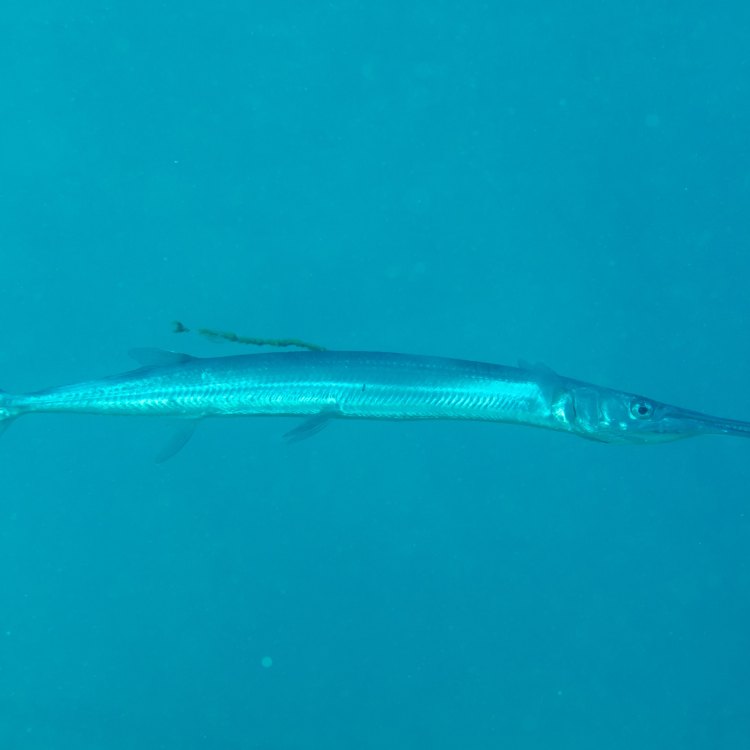
Needlefish: The Silent Predator of the Sea
Disclaimer: The content provided is for informational purposes only. We cannot guarantee the accuracy of the information on this page 100%. All information provided here may change without prior notice.


